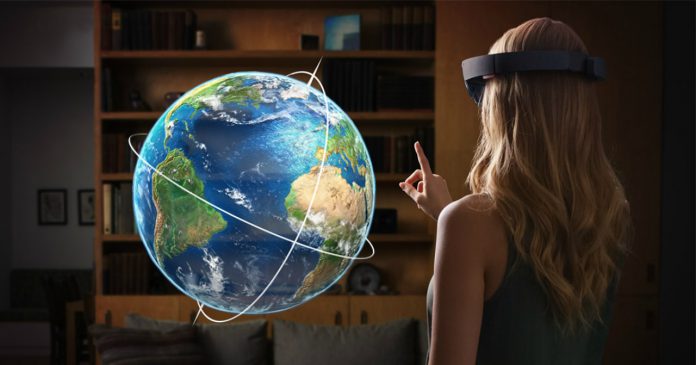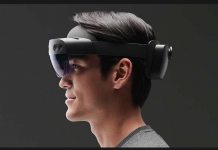HoloLens leverages augmented reality to place virtual objects into a real-world environment. It is possible to “store” these objects in the environment and see them again when you return. Augmented reality works because the HoloLens technology creates a virtual map of an environment. The device stores this map with the object to be loaded in the future. According to a new 2017 patent, Microsoft wants to create an interconnected network of maps that could eventually span the globe. When HoloLens currently maps an environment for the first time, it can take some time. Microsoft wants to speed up the spacial mapping by storing the results online. This means maps could become open source, so if you enter a space there may already be an existing map to use. The patent explains: “The computer interface is configured to receive a plurality of local 3D models of a part of a real-world environment, each having been generated by a different augmented reality device when located in the real-world environment. The global model generation module is configured to combine the local 3D models to generate a global 3D model, and to transmit at least part of the global 3D model to a device remote from the real-world environment. The global 3D model represents a greater portion of the real-environment than any of the local 3D models individually. This allows the remote device to explore and augment a virtual version of the real-world environment remotely. The augmentation sharing model is configured to receive rendering data from the remote device, and to transmit the rendering data to an augmented reality device when the augmented reality device is located in the real-world environment. The rendering data is for use in rendering a virtual object at the augmented reality device in the real-world environment.”
Open Source and Development
Theoretically, if HoloLens becomes popular enough, an extensive network of maps could be created. More importantly, it would be interesting to see if Microsoft open sources the idea. This could ipen it up to other platforms and creators for a wider network. As usual, this is a patent and there are no guarantees it will ever be release. However, it seems like an extremely interesting idea. We would be surprised if Microsoft is not looking to develop this further.




